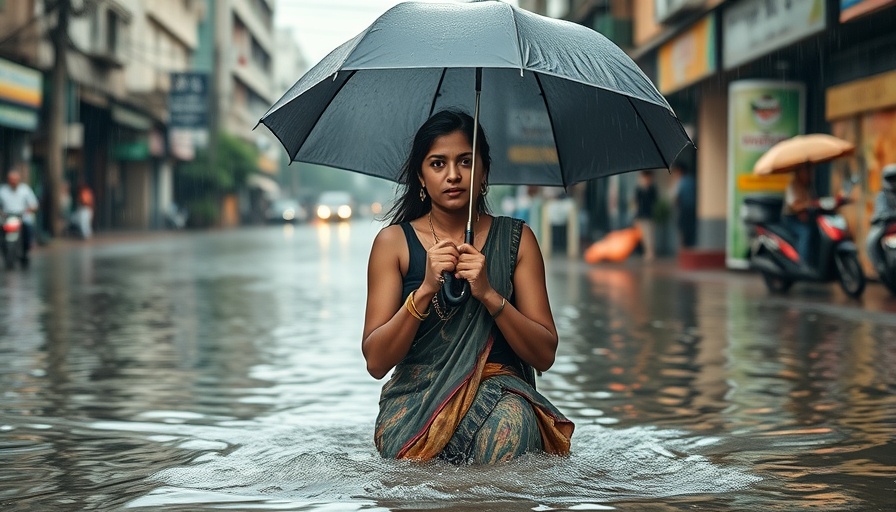
The Monsoon Crisis: An Annual Struggle
Every year, India faces a deluge of heavy rains that result in widespread flooding across its major cities. This phenomenon isn’t just a seasonal inconvenience; it’s a crisis that disrupts lives and highlights the shortcomings of urban planning. In cities like Mumbai, where residents recently experienced a pre-monsoon deluge that turned roads into rivers, the frustration is palpable. Facilities meant to navigate these weather events often fail, as seen when a newly built underground metro station was flooded, showcasing the failure of infrastructure to keep pace with the rapid urban expansion.
The Ripple Effects of Poor Urban Planning
The causes are complex, rooted in decades of poor urban planning and unregulated growth. Experts, including urban planner Dikshu Kukreja, highlight that the infrastructure in cities like Delhi, Mumbai, and Bengaluru has not evolved alongside the populace. 'Many cities rely on outdated systems designed decades ago,' Kukreja points out, noting that urban sprawl has built over natural drainage channels—further exacerbating the flooding issue. As urban areas continue to expand, municipalities increasingly find themselves unable to cope with the consequences.
Unique Challenges Require Unique Solutions
Each city's flooding problems stem from distinct geographical and climatic conditions, necessitating tailored solutions. As monsoon rains account for 80% of India's annual rainfall, the need for a strategic approach to manage water resources is critical. While some areas have begun to implement temporary measures like the installation of de-watering pumps to manage flooding, these measures fail to address the underlying failures of infrastructure. The habit of building over natural water bodies and neglecting them must end to reduce these floods' impact.
Long-Term Implications for Agriculture
While urban flooding garners attention, it is essential to remember that the monsoon is vital for Indian agriculture, affecting millions of farmers who depend on these rains. Many regions lack irrigation systems, making them reliant on the monsoon season. But with the erratic weather patterns caused by climate change, the livelihoods of these farmers are increasingly at risk. Any solutions put forward by governments and civic bodies must balance infrastructural integrity with agricultural sustainability.
Government Response: An Ongoing Journey
After a bout of criticism for their slow responses—like the Brihanmumbai Municipal Corporation's initial blame for blocked drains—many local governments are now taking steps to address the issue. However, the question remains: is it enough? The measures seem reactive rather than proactive. Residents are left to wonder why these problems persist year after year with no long-term solution in sight. Flooding data and past events reveal a clear trend; without a seismic change in urban planning, these scenarios will continue to unfold.
What Lies Ahead: Predictions and Opportunities
The ongoing climate emergency offers both challenges and opportunities for India's urban planners. Progressive policies geared towards sustainable infrastructure could pave the way for resilient urban environments that can withstand harsh weather patterns. With global warming presenting a new set of challenges—unexpected heavy rainfalls, prolonged dry spells, and extreme weather—there's a growing recognition that India's cities need to adapt or face catastrophic failures. As residents demand accountability, civic organizations may be compelled to invest more significantly in future-proofing urban spaces.
Call to Action: Empowering Community Voices
As we draw attention to the recurring issues caused by the monsoon, it's crucial for citizens to engage in dialogues with local governments about infrastructure improvements and sustainable urban planning. Residents can take action by advocating for better drainage systems and participating in community planning meetings. Each voice matters in shaping how cities respond to these environmental challenges and in ensuring that systematic changes occur for a better future.
 Add Row
Add Row  Add
Add 




 Add Row
Add Row  Add
Add 

Write A Comment